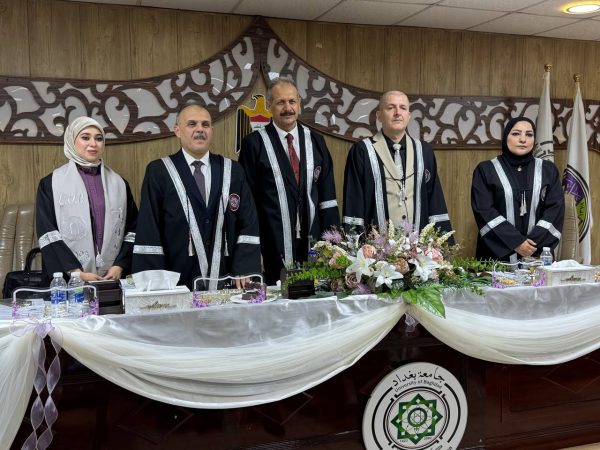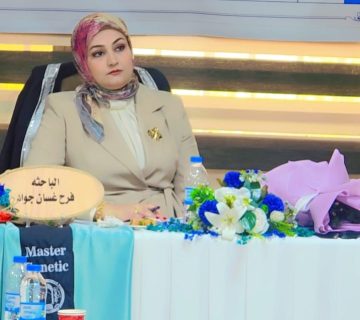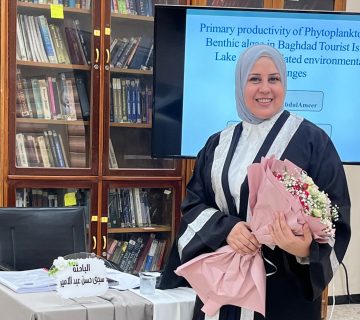Master’s Discussion
The College of Science for Women at the University of Baghdad held a Master’s thesis defense titled: New complexes of Some Metal Ions with Azo Ligand: Preparation, Spectroscopic Characterization, Thermodynamic Study, and an Evaluation of Their Biological Activity
by the student: Aseel Ayad Ahmed
The significance of this study lies in the synthesis of a new azo dye, which was employed to prepare a new series of complexes with first-row transition metals and selected elements from the second transition series. These complexes were evaluated for their antioxidant properties. Additionally, complexes of zinc, cobalt, ruthenium, copper, manganese, iron, vanadium, and molybdenum were tested against four fungal species and two bacterial strains. The inhibition zones were measured, and the thermal and structural stability of the complexes was assessed.
The study was conducted at the University of Baghdad, College of Science for Women, Department of Chemistry. Antioxidant activity measurements were conducted at the laboratories of the Ministry of Science and Technology, Directorate of Environmental, Water, and Renewable Energy Research, in Baghdad. The analyses included infrared (IR) spectroscopy, ultraviolet-visible (UV-Vis) spectroscopy, mass spectrometry, elemental microanalysis, molar conductivity, magnetic susceptibility, chlorine content, metal percentage, and determination of melting point.
The most important recommendations derived from this thesis are:
- New complexes of the azo ligand can be synthesized with lanthanide and actinide elements.
- Further investigation of the biological activity of the prepared complexes against other fungal species is recommended, including detailed studies at varying concentrations. These results can be compared to those of existing drugs on similar heterocyclic groups to explore their potential pharmaceutical applications.
- New ligands may be synthesized by substituting the ortho-phenylenediamine group with other phenolic compounds to create a series of novel ligands.
- The synthesized compounds should be evaluated against other cancer cell lines (e.g., colon, prostate, skin, etc.).










